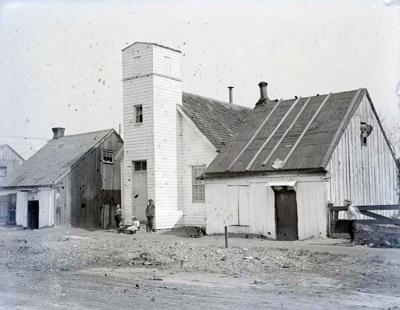This is a column about a Lancaster neighborhood that no longer exists.
Mayor Danene Sorace announced at Tuesday night’s City Council meeting that part of the old Gunzenhauser Bakery at the corner of North Prince and West Clay streets will be demolished “as soon as possible’’ because it is “in danger of imminent collapse.’’
The Historic Preservation Trust of Lancaster County had asked the city to reconsider demolition before allowing owner Charter Homes & Neighborhoods to destroy a “historically significant’’ building.
The trust also had said Feagleyville, the surrounding community that was demolished in 1911, in part to make room for the bakery, should be recognized. Charter had said previously that it would recognize Feagleyville in some way.
OK, but what was Feagleyville? And who was Feagley?
Feagleyville (also known as Feagleysville) was centered along “old’’ Clay Street, which lined up with the present Rock Street between Clay and Ross streets, according to Gordon Reed, a Lancaster resident who has studied records of the early community.
John Landis Feagley (1830-1912), who lived in the 300 block of North Christian Street, began purchasing properties in that area in 1871. He constructed dwellings he intended to rent and expanded his property and housing in subsequent years.
Feagley’s structures were small frame dwellings without electricity or running water. Some had dirt floors. When Feagley wanted to expand his operations in 1877, the city rejected his plans.
Feagley eventually notified his tenants that they would have to find new homes and sold his properties. Christian Gunzenhauser eventually purchased the land and destroyed many of the homes. The wood church at Feagleyville was partially disassembled, transported across “old’’ Clay Street and nailed back together.
Feagley’s tenants moved farther away. The displaced residents, Reed believes, may have moved to various places in the city, including Barney Google Row, Shantytown, Dunies Court, Miller’s Court, Yanko Court, Quades Court or Reigart’s Landing.
Now here’s a curious story associated with Feagleyville. Looking through old newspapers, Leroy Hopkins, a historian of Black Lancaster County, found that Feagley was involved in a bizarre accident one afternoon in 1896.
Besides being a landlord, Frank Feagley was an iron merchant. His main iron business, or “junk shop,’’ as the Lancaster Examiner described it on Dec. 9, 1896, was located at 344 N. Christian St.
Feagley and an employee, Harry Brown, had loaded 2,960 pounds of iron on a wagon weighing 1,000 pounds. Feagley weighed about 260 pounds. So that’s well over 2 tons, not including the horses pulling the load.
Then Brown, weight unknown, jumped on the back of the wagon. As the team of horses pulled out of Feagley’s shop, the wagon hit a bump. Brown fell off and a rear wheel of the wagon rolled over his body.
Several witnesses later said they thought Brown had been crushed to death. But he calmly stood up and said he was surprised he had not been crushed to death.
Brown told the Lancaster Examiner that “he owed his life to his heavy overcoat and nine apple dumplings that he had eaten just before the accident.’’
The coat and dumplings may have helped protect Brown’ vital organs, but a doctor who examined him found several broken ribs.
If an average apple dumpling, with milk, weighs about 6 ounces, John Brown created a fairly substantial stomach lining of more than 3 pounds of dumplings.
The lesson here: Avoid riding in a wagon full of iron with a stomach devoid of dumplings.
Jack Brubaker, retired from the LNP staff, writes “The Scribbler” column every Sunday. He welcomes comments and contributions at scribblerlnp@gmail.com.





